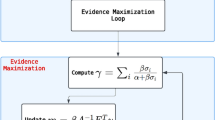Abstract
Deep learning has become an effective approach over the past few years to addressing intricate computer vision problems, and Convolutional Neural Networks (CNNs) have been the primary driving force behind this progress. Developing CNNs, however, comes with the obstacle of requiring huge, labeled datasets. Gathering and annotating a large dataset for any specific job is costly and time-consuming. To overcome this challenge, researchers can employ transfer learning, a technique that involves using pre-trained deep learning models on extensive datasets. This study primarily aims to investigate the application of various transfer learning methods in conjunction with Deep Convolutional Neural Networks (CNNs) for image classification. The research utilizes the Visual Object Classes Challenge 2012 (VOC2012) dataset as the foundation for its analysis. To classify a diverse range of object images, the study applies well-established transfer learning techniques, specifically fine-tuning pre-trained CNN models. Model performance is assessed through metrics like FPS (frames per second) and mAP% (mean average precision). A variety of models, including VGG19, SqueezeNet, YOLOv7, and Inception-ResNet-v2, are tested to determine the most suitable model for the dataset. The study’s findings demonstrate that employing transfer learning with CNNs can substantially enhance image classification accuracy on the dataset while reducing model development time. Notably, the Inception-ResNet-v2 model emerged as the top-performer, achieving an mAP score of 77%. This research underscores the potential of transfer learning as a powerful tool in the realm of image classification.
Access this chapter
Tax calculation will be finalised at checkout
Purchases are for personal use only
Similar content being viewed by others
References
Jbair, M., Ahmad, B., Maple, C., Harrison, R.: Threat modelling for industrial cyber physical systems in the era of smart manufacturing. Comput. Ind. 137, 103611 (2022). https://doi.org/10.1016/j.compind.2022.103611
Jiang, W.: A machine vision anomaly detection system to Industry 4.0 based on variational fuzzy autoencoder. In: Computational Intelligence and Neuroscience, vol. 2022 (2022). https://doi.org/10.1155/2022/1945507
Sharma, N., et al.: A smart ontology-based IoT framework for remote patient monitoring. Biomed. Signal Process. Control 68, 102717 (2021). https://doi.org/10.1016/j.bspc.2021.102717
Lin, C.T., et al.: IoT-based wireless polysomnography intelligent system for sleep monitoring. IEEE Access 6, 405–414 (2017)
Kumar, S., Pathak, S. K.,: A comprehensive study of XSS attack and the digital forensic models to gather the evidence. ECS Trans. 107(1), 7153 (2022)
Mall, S.: Heart diagnosis using deep neural network. In: Accepted in 3rd International Conference on Computational Intelligence and Knowledge Economy ICCIKE 2023, Amity University, Dubai (2023)
Sharan, A.: Term co-occurrence and context window based combined approach for query expansion with the semantic notion of terms. Int. J. Web Sci. (IJWS), Inderscience 3(1), 32–57 (2017)
Yadav, C.S., et al.: Malware analysis in IoT & android systems with defensive mechanism. Electronics 11, 2354 (2022). https://doi.org/10.3390/electronics11152354
Berghout, T., Benbouzid, M., Muyeen, S.M.: Machine learning for cybersecurity in smart grids: a comprehensive review-based study on methods, solutions, and prospects. Int. J. Crit. Infrastruct. Prot. 38, 100547 (2022). https://doi.org/10.1016/j.ijcip.2022.100547
Singh, J., Upreti, K., Gupta, A.K., Dave, N., Surana, A., Mishra, D.: Deep learning approach for hand drawn emoji identification. In: 2022 IEEE International Conference on Current Development in Engineering and Technology (CCET), Bhopal, India, pp. 1–6 (2022). https://doi.org/10.1109/CCET56606.2022.10080218
Sajid, M., Rajak, R.: Capacitated vehicle routing problem using algebraic particle swarm optimization with simulated annealing algorithm. In: Artificial Intelligence in Cyber-Physical Systems, CRC Press (2023)
Yadav, A., Kumar, S., Singh, J.: A review of physical unclonable functions (PUFs) and its applications in IoT environment. In: Hu, YC., Tiwari, S., Trivedi, M.C., Mishra, K.K. (eds.) Ambient Communications and Computer Systems. LNCS, vol. 356, pp. 1–13. Springer, Singapore (2022). https://doi.org/10.1007/978-981-16-7952-0_1
Prasad, M., Daraghmi, Y., Tiwari, P., Yadav, P., Bharill, N.: Fuzzy logic hybrid model with semantic filtering approach for pseudo relevance feedback- based query expansion. In: 2017 IEEE Symposium Series on Computational Intelligence (SSCI) (2017)
Kumar, R.: Lexical co-occurrence and contextual window-based approach with semantic similarity for query expansion. Int. J. Intell. Inf. Technol. (IJIIT), IGI 13(3), 57–78 (2017)
Author information
Authors and Affiliations
Corresponding author
Editor information
Editors and Affiliations
Rights and permissions
Copyright information
© 2024 The Author(s), under exclusive license to Springer Nature Switzerland AG
About this paper
Cite this paper
Tyagi, A., Khandelwal, R., Shelke, N.A., Singh, J., Rajpal, D., Gaware, I.R. (2024). Comparitive Analysis of Various Transfer Learning Apporaches in Deep CNNs for Image Classification. In: Santosh, K., et al. Recent Trends in Image Processing and Pattern Recognition. RTIP2R 2023. Communications in Computer and Information Science, vol 2026. Springer, Cham. https://doi.org/10.1007/978-3-031-53082-1_27
Download citation
DOI: https://doi.org/10.1007/978-3-031-53082-1_27
Published:
Publisher Name: Springer, Cham
Print ISBN: 978-3-031-53081-4
Online ISBN: 978-3-031-53082-1
eBook Packages: Computer ScienceComputer Science (R0)




